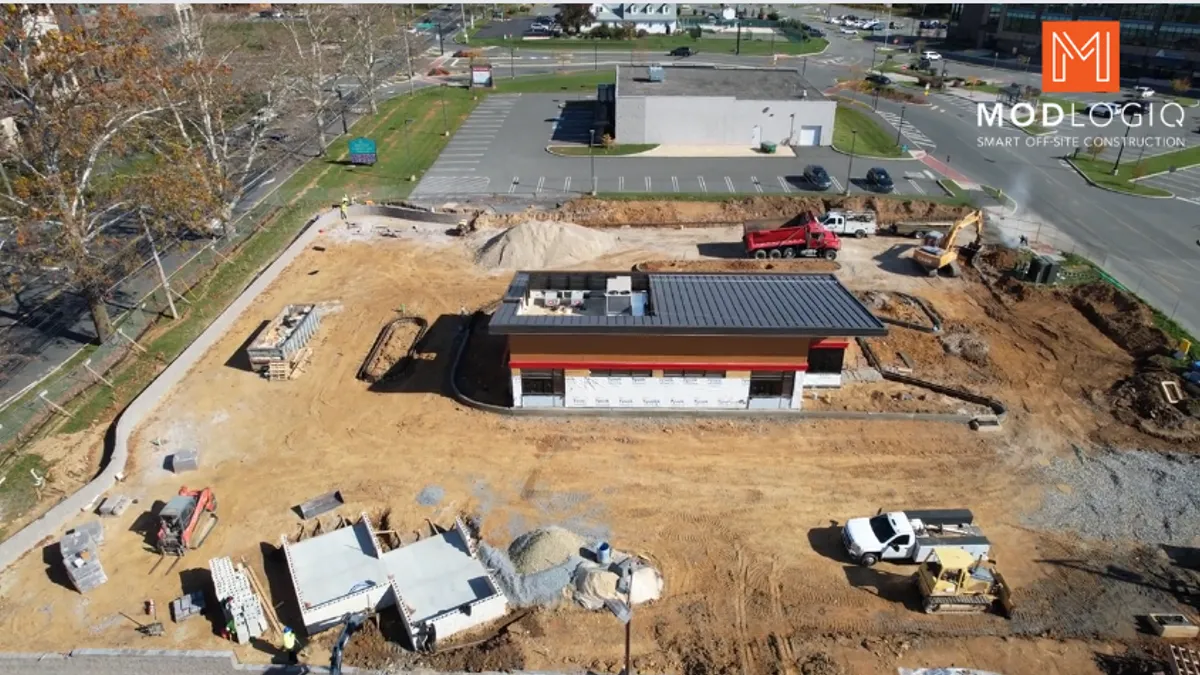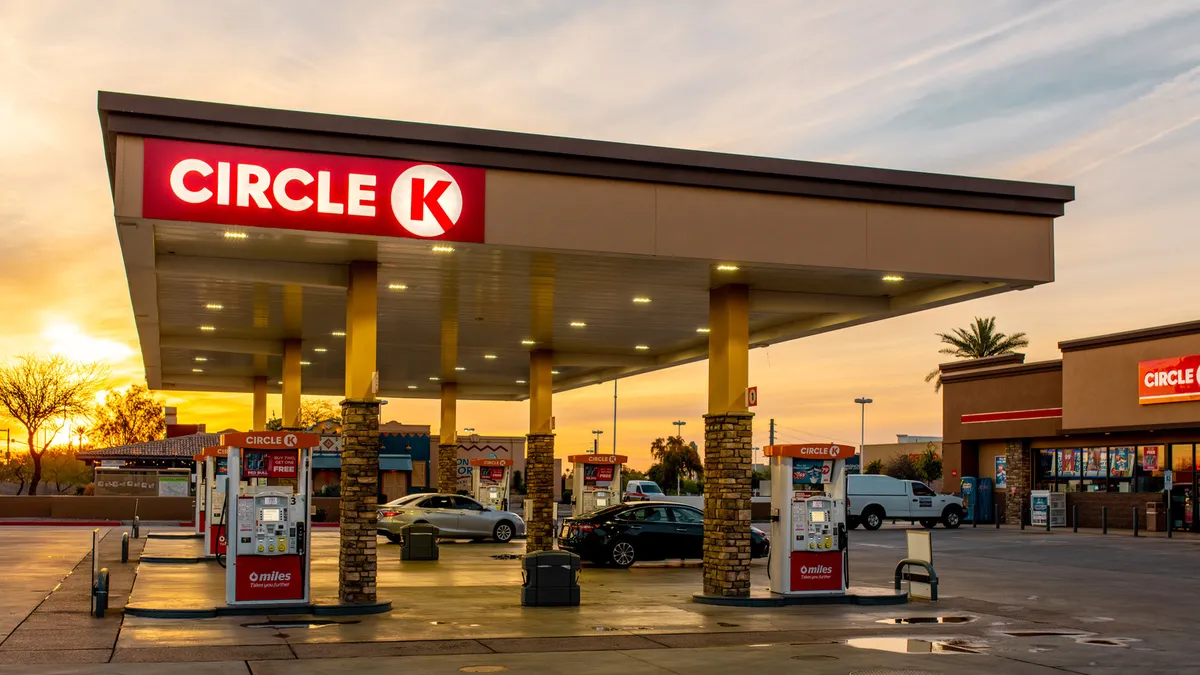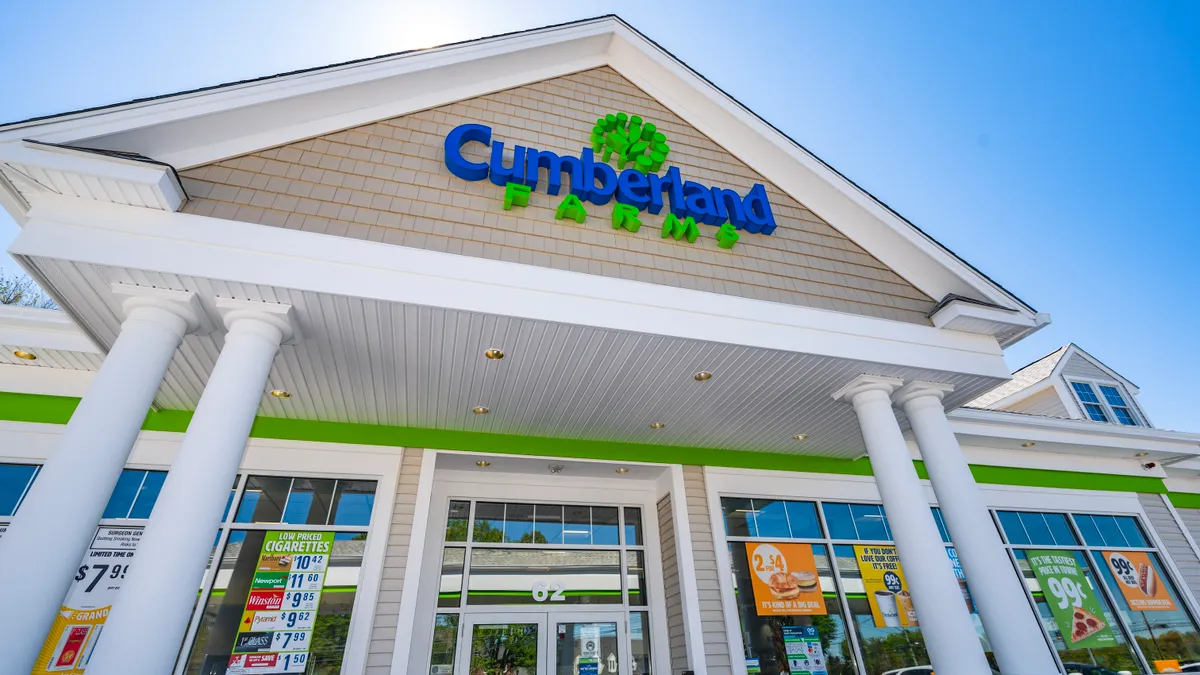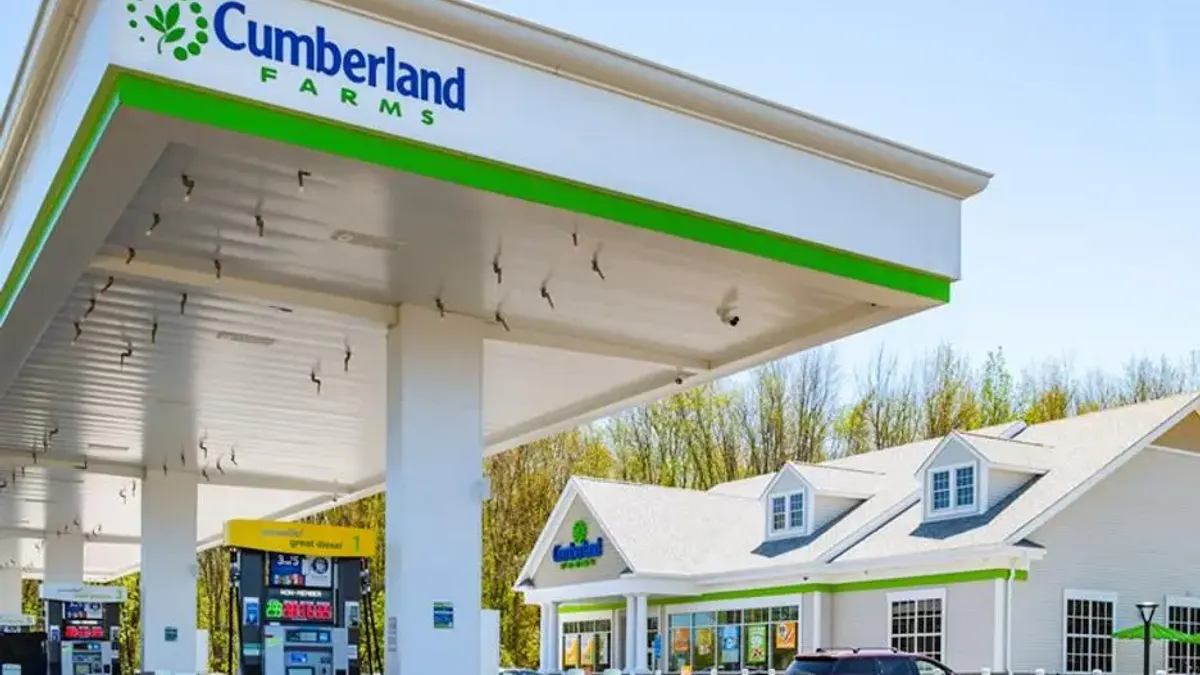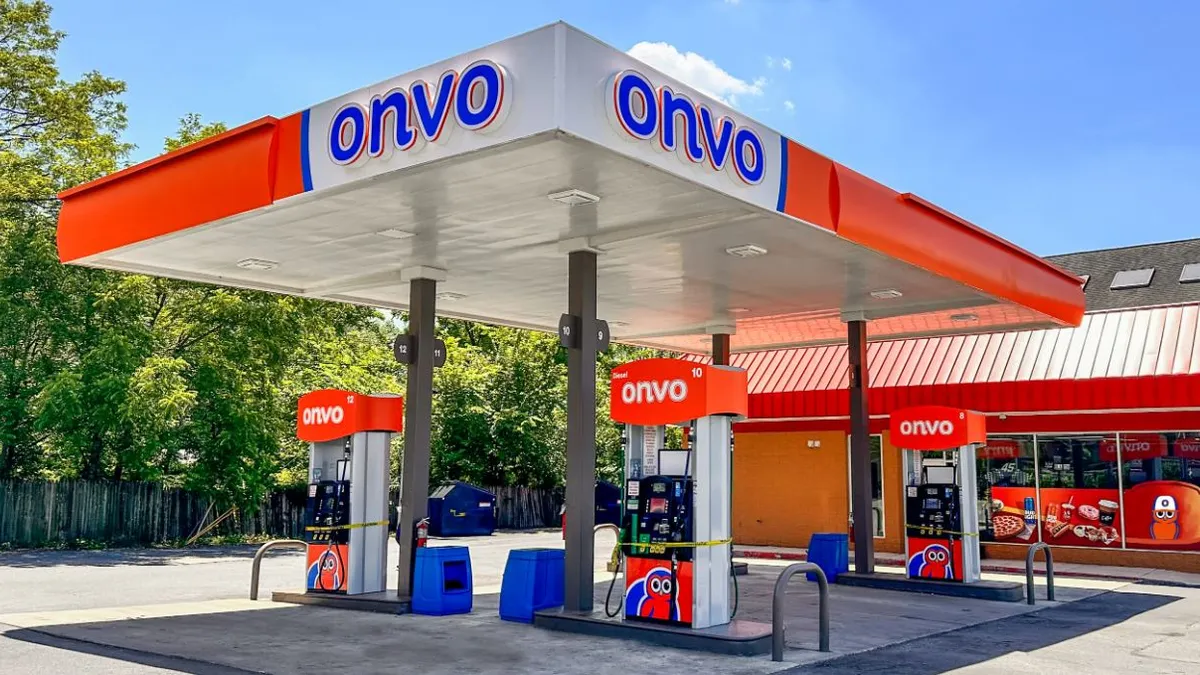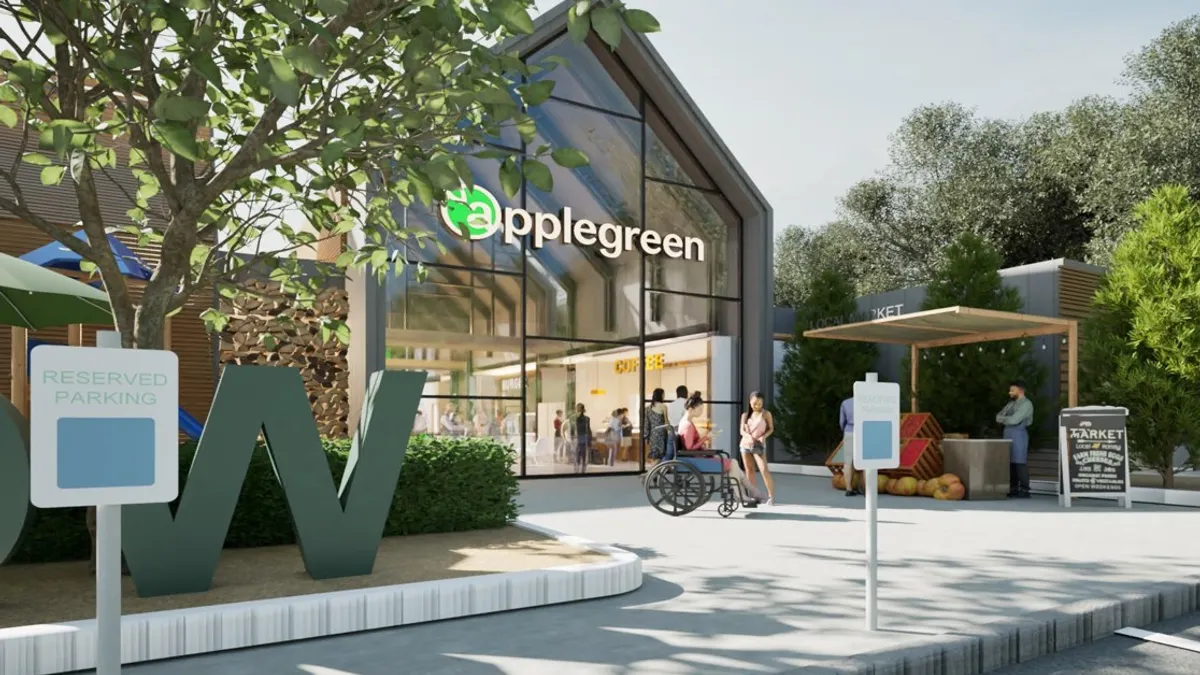When Wawa decided to test out off-site construction, it went all in.
The company approached Modlogiq, a New Holland, Pennsylvania-based modular design and construction firm, with a list of four sites where it wanted to build standalone drive-thrus.
“They committed at the concept level, said ‘here's our store, conventionally. Let's design a modular [version] for these four sites,’” said Greg Oniskey, director of sales for Modlogiq.
Prefabricated modular construction is gaining momentum nationally. It made up around 2% of the U.S. construction market share in 2015, but that grew to well over 6% by 2023, according to data from the Modular Building Institute and ConstructConnect. The approach can be used to construct entire buildings or make additions to existing ones, like adding a kitchen or beer cave.
Once construction starts, these types of sites come together quickly. The Wawa drive-thrus, for example, were built in a warehouse in about 40 days, then assembled at the location in just a few more days.
While it’s growing more broadly, modular design is fairly rare in the convenience store industry. Wawa and Murphy USA are seemingly the only two industry players that have tested the waters.
Still, experts say modular construction can make a lot of sense for smaller retail locations like convenience stores, thanks to the quick turnaround time. The centralized nature also offers additional opportunities, especially for larger chains.
“The building plans tend to be very replicable, so it’s ideal for chains and companies looking to build many similarly-designed buildings,” said John McMullen, marketing director for the Modular Building Institute.
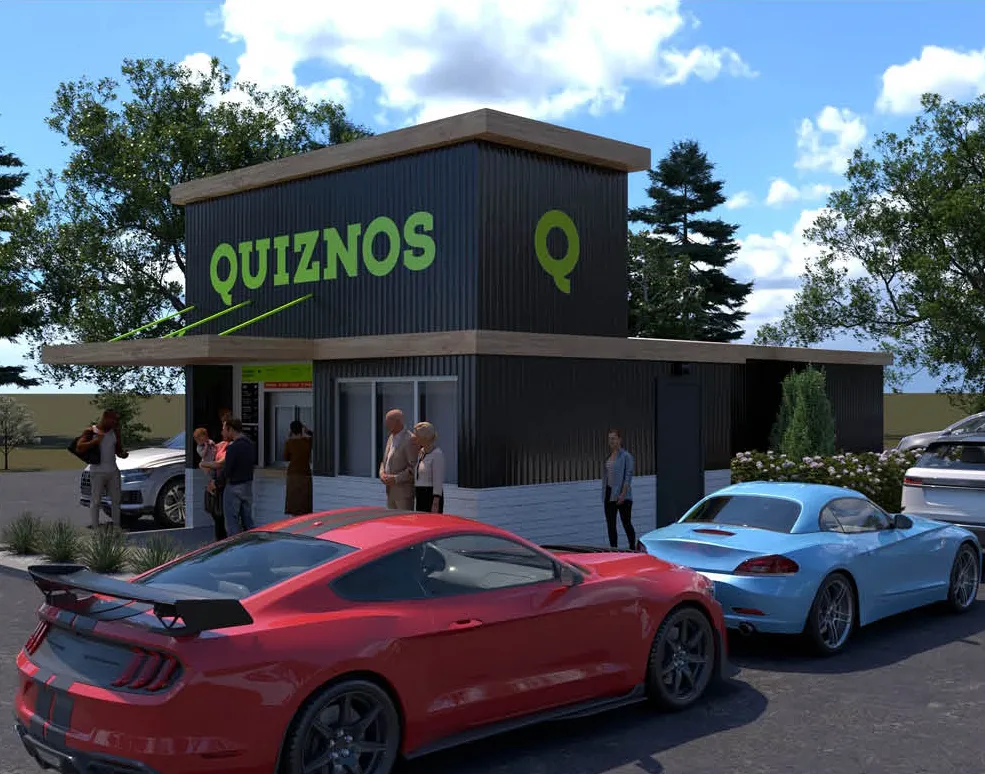
How is prefab being used and what benefits does it have?
One of the biggest advantages to modular construction is speed. McMullen noted that a modular hospital in Ohio built by Modlogiq opened 15 months earlier than if it used traditional construction methods.
A structure crafted this way is built in a factory, where it is tested before being disassembled and brought to its final site. Most states also have a modular program overseeing the industry, which can speed up other parts of the process.
“All the testing and inspections … all that work is state approved before the buildings ship to site,” said Oniskey.
Modlogiq — which is holding a webinar in December on shaping the future of modular construction — brings in experienced subcontractors to install specialized systems like mechanical, electrical and plumbing. This can be helpful in areas of the country where there are fewer specialists, Oniskey said. Rather than waiting for those local tradespeople to have availability, the work can get done in the factory.
“Given the shortage of skilled construction workers in much of America and the preference for employees to work in controlled settings, modular construction’s ongoing emergence is virtually assured,” said Anirban Basu, Associated Builders and Contractors’ chief economist.
Because most of the work is done in a warehouse, weather can’t affect the project as much either.
Since it only takes a few days to put the building together, site disruption is kept to a minimum — which can especially be important if a c-store is located in a plaza or in front of a big box retailer.
“How good of a neighbor are you, if you're in a retail center, and instead of [disrupting it] with conventional construction for a long time, you just bring the building and set it down on a foundation?” Oniskey said.
While modular construction can be more expensive than traditional construction, thanks largely to transportation costs and the project sites’ relative cost of labor, the fast turnaround this method brings might mitigate that downside, noted Oniskey.
“[Companies] can look below the bottom dollar of whether it's $500 [per] square foot or $550 [per] square foot and say, okay, if I'm selling $10,000 worth of coffee a week, if I can open up 16 weeks early, what's my revenue stream there?” he said.
Finally, “the controlled factory setting of modular construction often results in higher quality and fewer defects,” said Basu.
But not every location is right for modular construction.
“For example, for very large-scale retail developments, traditional construction methods may still be more cost-effective or efficient,” said Basu. “This might also be the case for projects with highly customized or unique architectural designs.”
Oniskey also noted that because of the logistics of transporting the building to its permanent home, larger and taller structures can be a challenge.
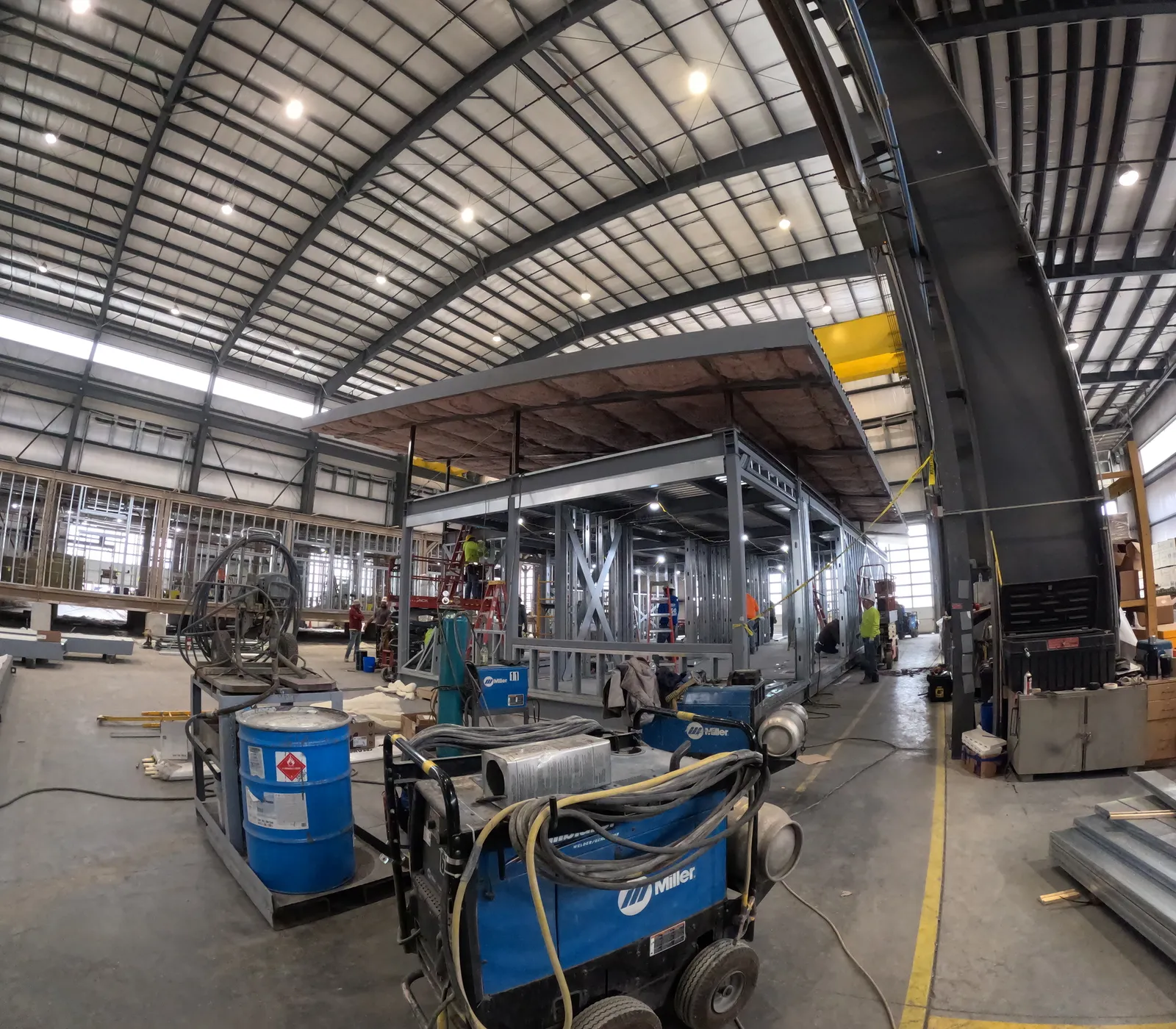
What does the future hold?
Modular construction has several use cases within c-stores. Companies could not only use it to construct new buildings, but also to make additions onto existing stores or even build a temporary store while the main building is being rebuilt.
So why hasn’t modular construction gained more of a foothold with c-stores?
“Retailers may hesitate to adopt prefabricated construction due to perceived higher upfront costs despite potential long-term savings,” Basu noted.
Basu also said some companies’ view of modular may be that it’s less flexible, or their decisions may be affected by the logistics of getting a store from the warehouse to their site.
Oniskey added that some people may think of prefabricated structures as simpler buildings, like portable classrooms in school parking lots. While there’s a place for those structures, they don’t represent how varied the industry can be, he said.
“This can be permanent. It can be any level of fit and finish,” he said.
But the stage may be set for Modular construction to make gains in the c-store industry. Rapid growth, particularly in new markets, and testing new formats have become priorities for chains recently.
“If you find a company that can build what you need at the same quality, at about cost-neutral plus or minus on regional pricing. And you can do it faster?” said Oniskey. “Why wouldn't you do that?”



